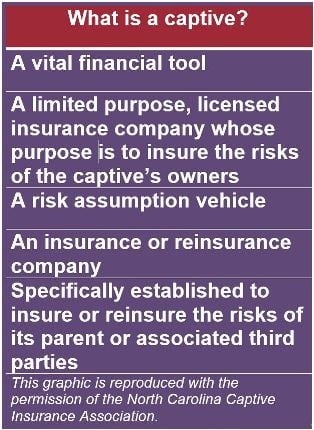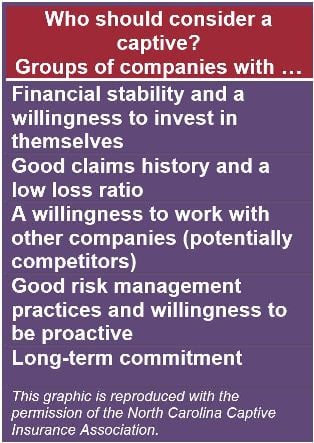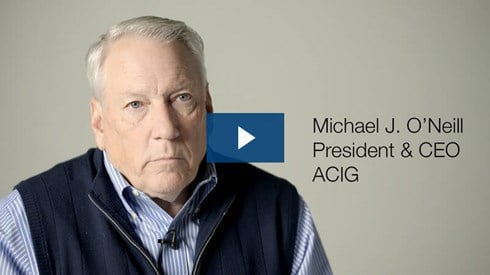Why Should You Consider Forming a Captive Insurance Company?

November 07, 2023

Once just a speck on the commercial insurance market landscape, captive insurance companies have become a mainstream risk management tool.
The "Mainstream" Captive Alternative
Today, more than 7,000 captives are licensed, a huge leap from the approximately 100 to 200 captives that were in business in the late 1960s.
Just as the number of captives has increased, so has the number of states and countries—best known as domiciles—where captives can be set up. Captive parents have dozens of domiciles to choose from, including 25 US states.
While Bermuda and the Cayman Islands continue, as they have for many years, to be the world's largest captive domiciles, several US states have become very large domiciles.
For example, Vermont passed captive legislation in 1981 that made the Green Mountain State the first state to be competitive with Bermuda and the Caymans. Vermont now is the world's third-largest domicile with 657 captives at the end of September 2023.
The number of different types of captives has grown, as well as the number of captives and domiciles. In the United States, federal lawmakers have something to do with that expansion.
In 1981, Congress passed legislation creating a new type of captive: risk retention groups (RRGs). Unlike other captives, RRGs can operate across the United States after meeting the licensing requirements of just one state.
In 1986, Congress responded to soaring rates in the commercial market and expanded the 1981 law to allow RRGs to offer all casualty coverages—except workers compensation—to member-owners. The original law limited the coverages RRGs could write to product liability and completed operations.
Today, well over 240 RRGs are operating. Some of them have thousands of policyholder-owners.
While captives are widespread, many employers—both large and small—have yet to consider that risk management tool. At the same time, many employers are not well versed about captives.

Simply put, a captive is a way of retaining risk of its owners and not, as is the case with traditional insurance coverage, transferring all the risk to a third party, according to Anne Marie Towle, CEO of Global Risk and Captive Solutions at Hylant in Indianapolis, Indiana.
"Essentially, whether you're a group captive, single-parent captive, [or] cell structure, you're looking to retain some portion of the risk within the captive itself," Ms. Towle said.
"A lot of times what you are looking for are cost efficiencies and a bit more control in your insurance program," Ms. Towle said, adding that a captive gives parent organizations the opportunity "to capture some of the underwriting profitability back" into their own pockets.
"When we are looking at today's marketplace, the opportunity to leverage a captive is far greater than ever before to stabilize the cost of risks," Ms. Towle said.
While captives potentially can generate big profits for their parent organizations, there are other key financial issues potential captive owners have to consider, with one of the biggest being the amount of money that they must funnel into their captives to meet domicile requirements and assure that the captive will have sufficient money to pay covered losses.
"Whether you're doing it for yourself or for a group of people, one big component that's very different than the risk transfer market is being able to have capital that will be infused in the beginning and that will remain in there. So, consider that financial transfer and the capacity to take that on and tie up capital from an organizational perspective," Ms. Towle said.
At the same time, organizations joining group captives have to consider that the capital they are required to contribute to the captives may, under rules set by the captives, be locked in for years.
Captives "can't afford to have everybody leave in a very short period of time. So, you might put into it a requirement that you have to stay at least 3 or 4 or 5 years in order to receive your capital back," per Kevin Doherty, president of the Tennessee Captive Insurance Association and an attorney with law firm Dickinson Wright.
When capital can be pulled out by a policyholder-owner is something that needs "to be worked out among the group ahead of time, otherwise you're going to have dissension," Mr. Doherty added.
In all, while, "We don't see as many group captives as we used to, but group captives still are a viable tool for certain groups or industries. One of the significant advantages of a group captive is that you don't have issues with risk distribution," Mr. Doherty said.
If those and other issues can be worked out, captives can provide considerable advantages. For example, with their owners setting conditions, captives can provide broader coverage than commercial insurers.

By sponsoring a captive or being part of a group captive and broadening coverage, employers don't have to worry, for example, about an insurance adjuster saying, "Sorry, that's excluded and you don't have coverage. So, I think that's an important point, particularly in a group captive," Ms. Towle said.
And some employers have expanded their captives beyond liability and property risks to fund employee benefit risks, such as life insurance and long-term disability. That approach broadens captives' risks and may save money for their parents compared to buying benefits coverage in the commercial market.
Most of those arrangements require Labor Department approval, but several dozen employers, including such large, well-known employers as Alcoa Corp., Archer Daniels Midland Co., Google LLC, Hyatt Hotels Corp., and Microsoft Corp., have won regulatory approval to fund benefits through their captives.
And more employers are likely to tap their captives to cover other employee benefits-related risks. An earlier Marsh LLC survey found that approximately 16 percent of employers with captives currently are considering funding employee benefit risks through their captives, while just under 20 percent say that it is likely that they will consider that approach in the future.
November 07, 2023


